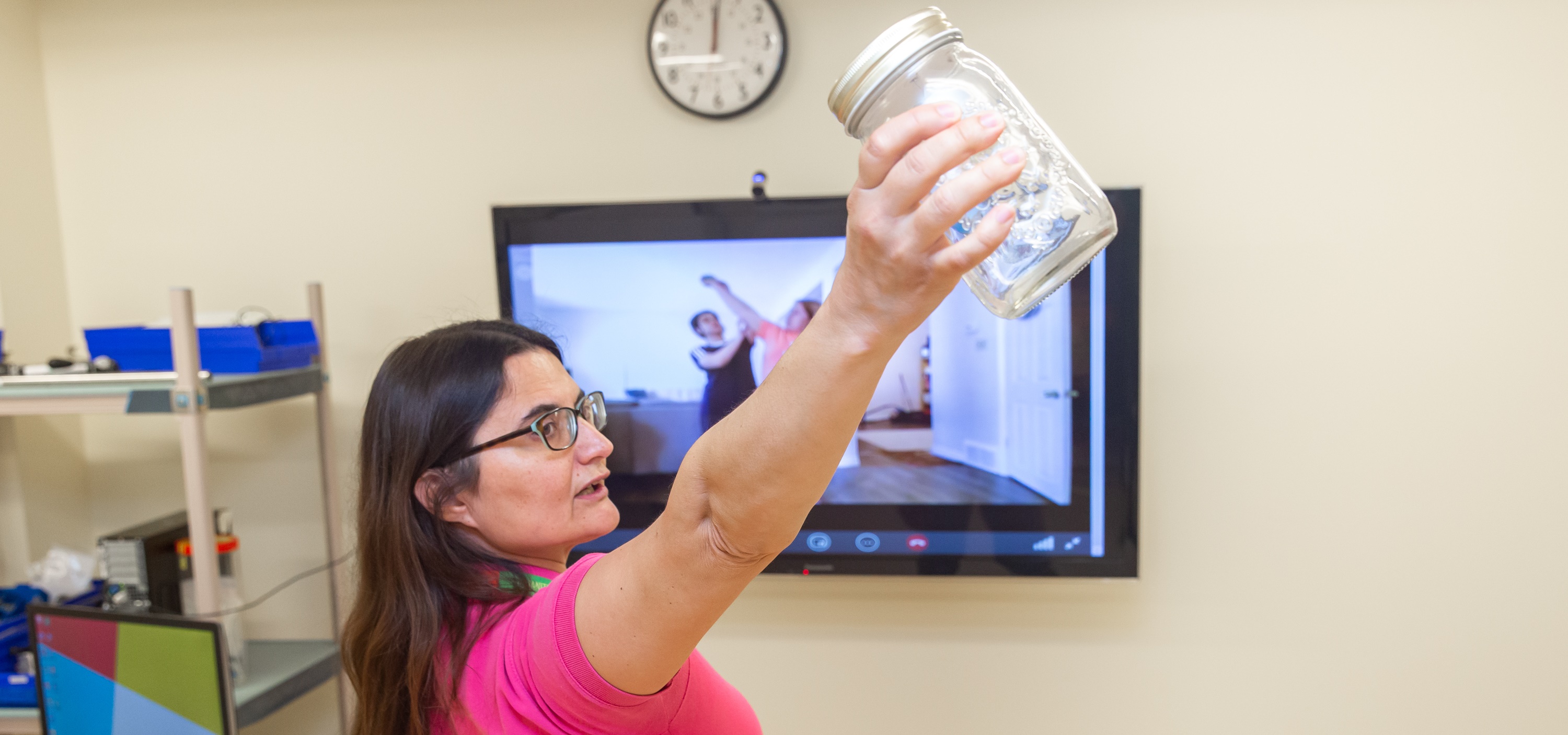
For Bridgepoint’s Ambulatory Care Centre, the idea of providing care virtually during the COVID-19 pandemic posed some big questions.
“We had to ask, how can we provide a type of care that’s often very ‘hands-on,’ when we’re not in the room with the patient? How do we need to modify exercises when the equipment we typically use isn’t available? How can we ensure the safety of our patients?” says Sandy Duncan, Case Manager. The entire team felt strongly that we continue to provide care for our patients and advocate for their needs but we would have to think differently about rehabilitation care.”
The team took a rigorous approach to developing a virtual rehab program. guided by current research, best practices, patient-centred care and safety.
The new virtual rehab, like care in the clinic, starts with speaking about the patient’s goals for their treatment. This often happens in an initial meeting over the phone with two members of the team, which may include physiotherapy, occupational therapy, speech-language pathology, social work and nursing. From there, virtual therapy is scheduled and treatment begins.
Mae Kotsios a physiotherapist who provides care for patients recovering after stroke says “so much is different” about therapy sessions conducted remotely. During her initial visit she assesses her patient’s physical function over video teleconference, which can be challenging. If a caregiver is available in the patient’s home, she provides training and education so they can support the patient by spotting during exercises or providing the hands-on assistance that Mae can’t. Mae also asks for a tour of the home. “I look around the house to choose the best location to safely do exercises, like close to a counter for balance work. We work with what we have in the home.”
Mae says the need to constantly problem-solve and be creative is rewarding because, despite working remotely, she continues to see patients make major improvements in function. “It’s a great feeling that I was able to help make that happen, virtually!”
The team has gained some important insights from providing care in patients’ homes and is now exploring using virtual visits as a tool that could enhance the patient experience in the future, even after in-person visits resume. This program that started when the Ambulatory Care Centre had to close its doors is opening up new possibilities for future care.
The Sinai Health Heroes story series highlights our people and their efforts during the COVID-19 pandemic.
One patient’s experience with virtual rehab
Svegi Gonedik, a patient at the Ambulatory Care Centre says: “When I learned the virtual therapy was about to start I felt so happy and lucky,” she says. “They didn’t forget about me and cared as much as myself about recovering. Now I am so happy to go back to therapies and see therapists again. I appreciate their time and effort spent on outpatients with the same energy and sincerity.”
